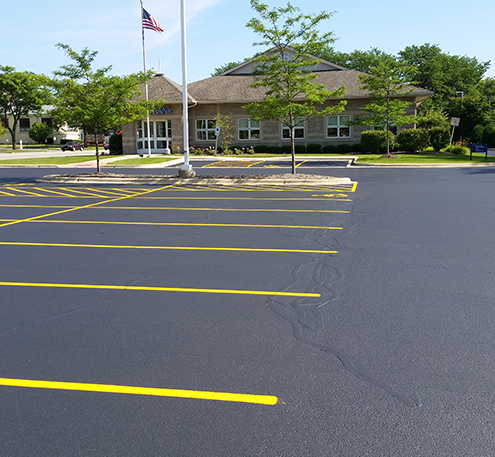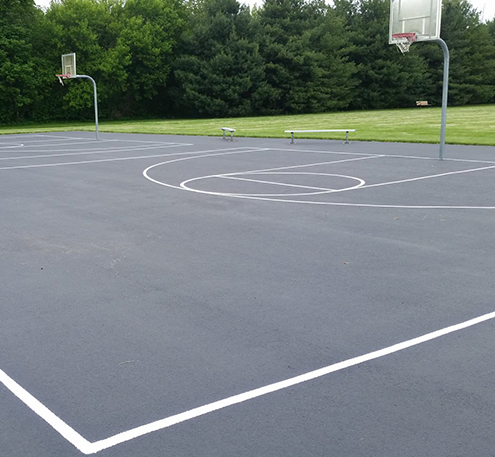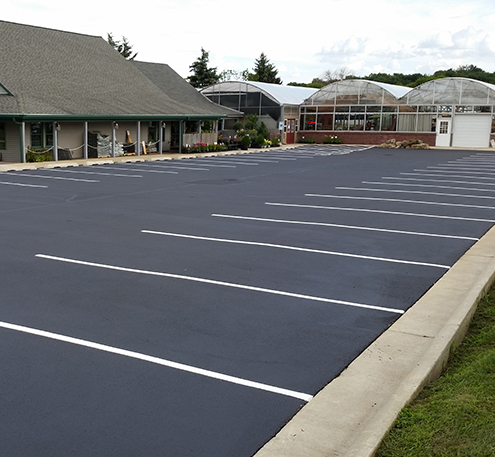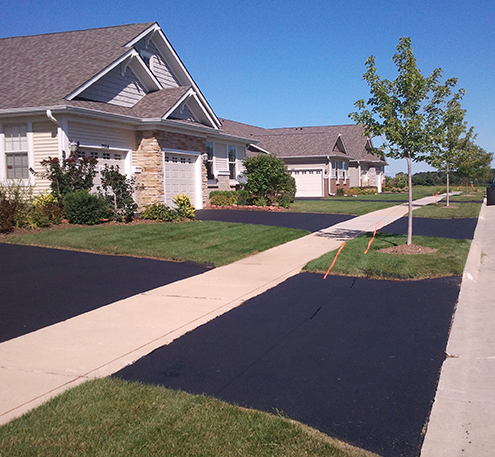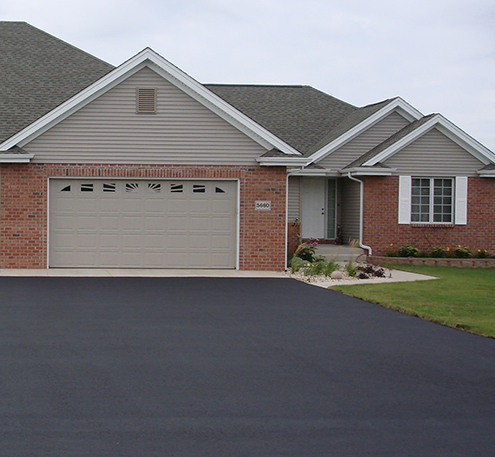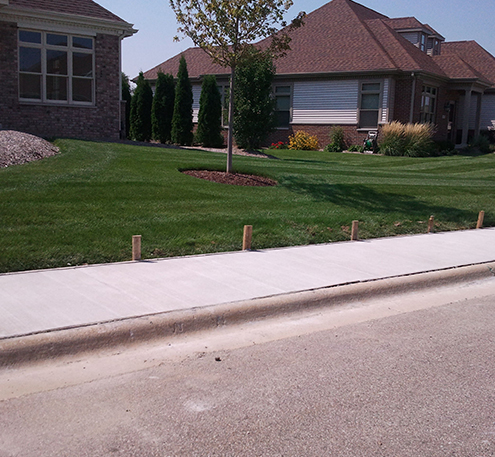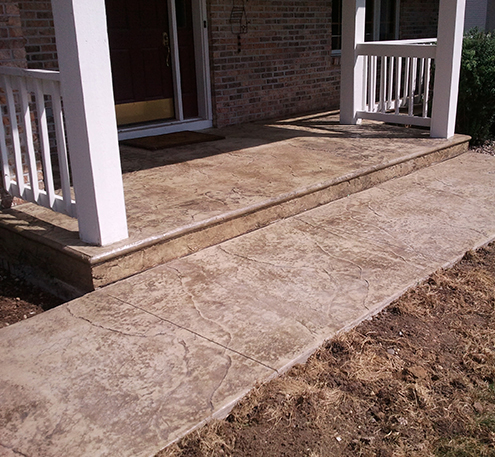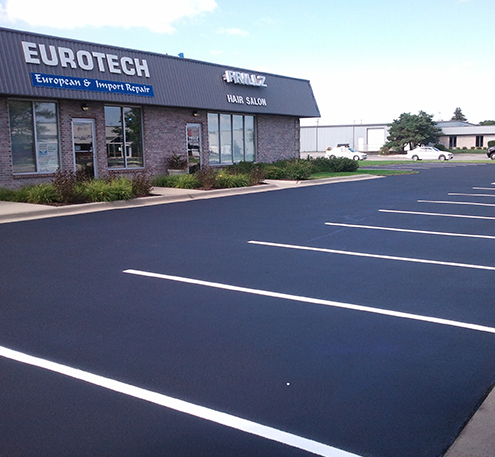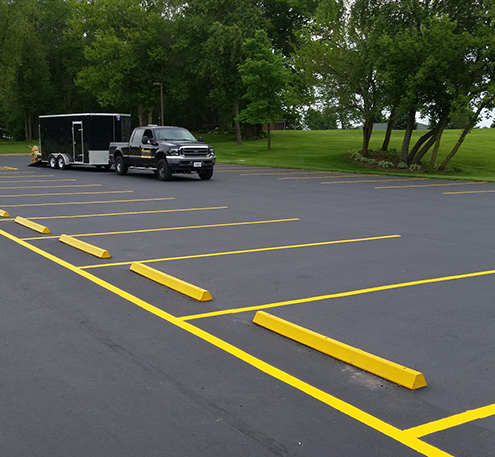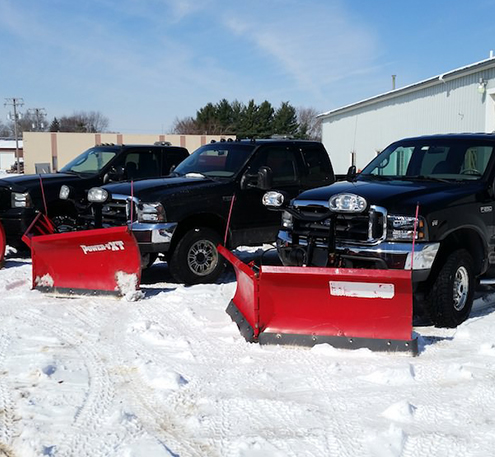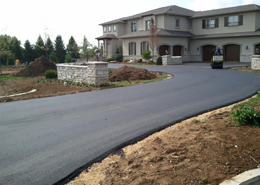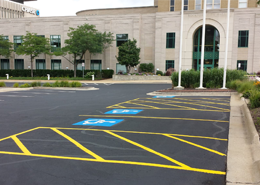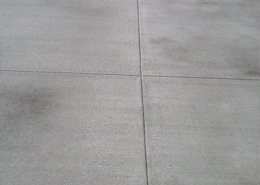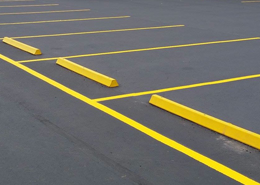Why Seal Coat?
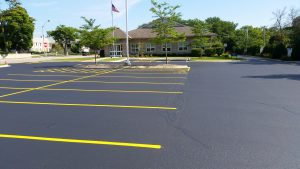 Asphalt has an effective life of 7-12 years before expensive repairs must be undertaken.
Asphalt has an effective life of 7-12 years before expensive repairs must be undertaken.
Asphalt pavements have two major weaknesses that lead to this limited lifetime.
1. First asphalt has poor resistance to UV radiation or simply sunlight.
Asphalt pavements are a simple combination of rock, sand, and a glue which is the liquid asphalt that binds everything together. The UV radiation breaks down the asphalt glue and weakens so that it can no longer hold the rocks and sand, thus gradually loosing the top surface.
The first and most obvious sign of this degradation is the gradual change in the color of the asphalt from black, to brown, and finally to gray.
Next your parking lot begins to look rough and piles of sand seem to appear in the low areas of the parking lot. This is not from your neighbors yard but from the deterioration of your parking lot.
In the later stages of degradation the bigger rocks fall out, raveling takes place, and the parking lot is rough, extremely dirty because now dirt and grass fill the spaces where rocks were.
Also because the asphalt is oxidizing under the UV radiation, it looses its flexibility. This flexibility is extremely important because asphalt can take great loads and bounce back to its original condition. As asphalt looses its flexibility it becomes brittle and begins to crack and break.
2. The second major weakness of asphalt pavements is its poor resistance to salts, chemicals, and petroleum products.
Petroleum products cause most of the damage as witnessed by oil spots and gas spills. The reason for its poor resistance is that asphalt is a petroleum product. They are separated only by the refining process of crude petroleum. Naturally, gasoline and oils will dissolve directly into the asphalt, soften the structure, and eventually cause major damage to asphalt pavements.
Based on the these two weaknesses: poor resistance to UV radiation and chemicals such as melting salts and petroleum products, it is logical to conclude that one should use some sort of coating that would shield the asphalt pavements from these harmful elements that lead to the degradation of your costly asphalt parking lot. This is in essence the idea behind seal coating.
After much of the deterioration just described occurs this, unfortunately, seems to be the time when many people call the seal coater and want them to make everything better. Well, we can do a lot and make it look black, but much of this deterioration could have been avoided with regular preventative maintenance.
Asphalt surfaces can be effectively protected by using a seal coating which acts as a barrier between the external har Usually a coal tar emulsion sealer is used which is highly resistant to water, gas and oil, salt, chemicals, and UV radiation . It is the perfect substance to combat the degradation of your asphalt pavement.
Before seal coating the asphalt must cleaned to be free of all dirt, vegetation, and other foreign debris using blowers, sweepers, brooms, and sometimes high pressure washers. Once the pavement is cleaned then any existing oil spots should be primed so that the sealer will adhere. Normally two coats of sealer are applied to the asphalt sealer either by squeegee or spray. Once the seal coating is completed it is very important to give adequate cure time for the coating which is to keep traffic from the freshly sealed surface for 24 hours. Traffic before 24 hours will cause premature wear and increased tire marking. During this 24 cure period the striping can be accomplished so that after the 24 hours, your parking lot is completely ready for traffic.
Another great weapon in the arsenal of the pavement maintenance contractor is crack sealing.
Crack sealing is done prior to any seal coat applications. If cracks are left unattended, water is able to penetrate to the base soaking and swelling the limestone thus destroying their strength and load bearing capabilities. It is evidenced by “alligator” cracking, sunken areas, and eventually potholes. Cracks at least 1/8″ or wider should be treated with a least a cold pour sealant which will seal the cracks for a year or so. For a longer term repair, hot poured cracks sealant should be used. Hot Pour crack sealant remains flexible for a longer period of time and if used the crack repair can remain effective for 1-3 years.
Ok so what is the bottom dollar?
It costs me money for all of this maintenance. Won’t this add up to overlay every 10-15 years?
Simply put….NO.
If one chooses to protect their asphalt surfaces with a seal coating and crack sealing, the life of the asphalt can at least be doubled and many times tripled at a fraction of the overlay costs.
Besides savings in money another great advantage of seal coating is that a well maintained property increases the value of your property and is more pleasing mful elements and the asphalt pavement.
Request a Quote or Call (815) 243-5438

